
My spirit got fed. O! Did my spirit get fed.
It wasn’t one of the uncountable New Orleans restaurants. It wasn’t church (or temple or mosque or…). It was a walking tour sponsored by Hidden History Tours and led by the brilliant, thoughtful, decent Mr. Leon A. Waters.
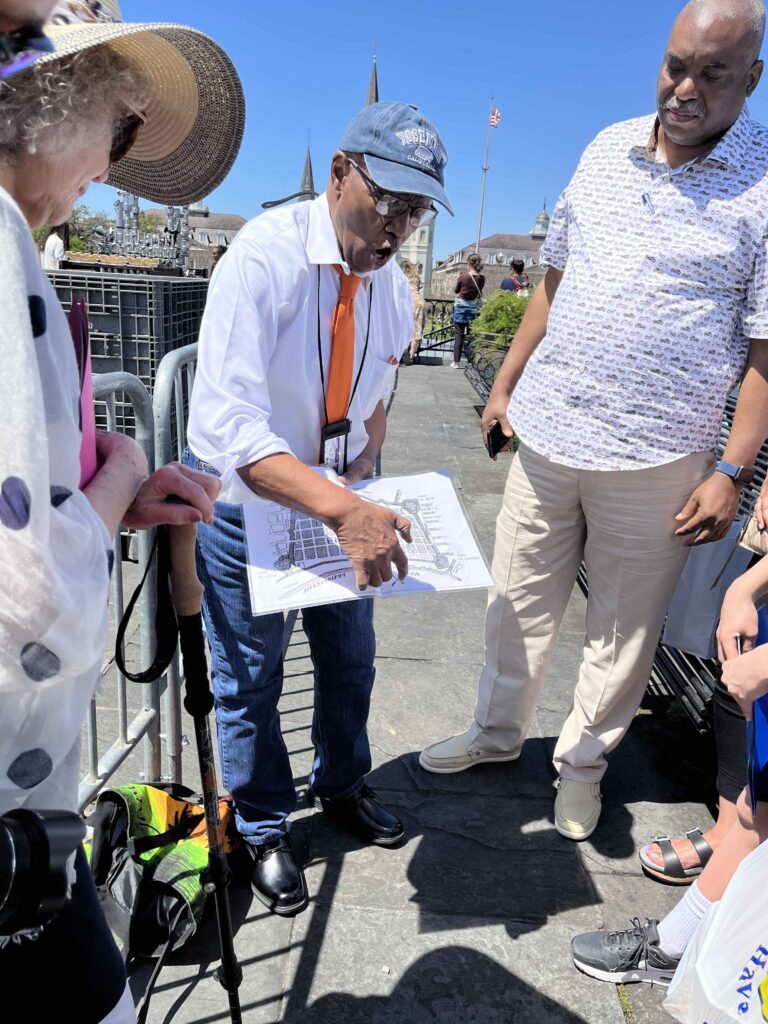
I don’t know how many posts I will end up writing that reference this tour. I am guessing many will come to mind, though probably only a few will actually get written.
The tour was supposed to be two hours; it ended up being two-and-a-half chock-full, rich hours, so well-spent. I feel only blessed that we got extra time. Then, due to his generosity and the correspondence we had conducted in the months previous, I spent another hour and a half with Mr. Waters as we drank lemonade, him eating Buffalo shrimp and me munching on garlic fries.
I could not have had a better introduction to New Orleans.
This is not the first time I have been to New Orleans. I’m not really sure, when people ask if I have been here before, whether to count my trip in 2017. I was attending my faith’s annual national meeting (we call it General Assembly). I saw a little of New Orleans then. Mostly I was attending to the important issues of that national gathering. If you have a life that brings you to meetings in big convention halls, you know how it’s possible to go to a city and learn nothing about it.
And still, it was actually on that trip, in a workshop of religious professionals on the day before the General Assembly began, that I trace how I entered into the story of the Lost Souls. It’s not the beginning of the Lost Souls Project – just my joining into a story that has existed long before I became part of it and will exist long after I am no longer a part of it.
Back in September, 2017, I preached about this:
During the Q & A time, a white colleague asked what she can do to address racism since her congregation is not only majority white, but was 100% white. The response came from religious educator of color, Aisha Hauser, who has been an important voice in our faith movement for a long time, and who gained more visibility in this past half year as we have more actively struggled with patterns of racial bias and white supremacy in our own midst. Aisha said, “If you are anywhere on this continent and in a space that is white-only or white-majority, it wasn’t always that way. Start there. Start with that story. See where it takes you.”
It wasn’t always that way. Start there. Start with that story. See where it takes you.
Out of that admonition, I went back to New Jersey. I kept an already-scheduled meeting with a local historian. In that meeting, I learned of a slave ring that had operated 200 years previously in the town where my congregation is located. I learned that there had been a presentation of this history at the local library just a few months previously. I met Black residents of that town who have held this history. I preached to my congregation about this history and how there is a street in town that bears the name of the head of the slave ring. We generated a petition to have that street name changed. There was community networking with the local NAACP branch. There were testimonials at Township meetings, seeking to educate about the history, as well as to change the name of the street. The idea for a memorial, whether or not the street name changed, arose, first voiced by Dr. Peter Kahn.
While that idea was voiced by one person, very quickly it became embodied by what became a grassroots group, which took shape under the leadership of the New Brunswick branch of the NAACP branch, the New Jersey chapter of the Afro-American Historical and Genealogical Society (AAHGS), the Unitarian Society, and some dedicated, community-minded individuals. Years in the development, the Lost Souls Public Memorial Project is now its own federally recognized non-profit organization, continuing the vision of researching the history, educating the community, and building a memorial to the people deceived and kidnapped from New Jersey into the Deep South.
While we do not know with certainty what happened to the 137 African American women, children, and men who were stolen by the New Jersey slave ring in 1818, we do know that they were placed on ships that sailed from New Jersey and arrived in New Orleans. And so, here I am, in New Orleans, because they ended up here, too.
Since I arrived here in NOLA, it has occurred to me how this trip is a kind of coming full circle for me. Though I don’t especially like the image of a full circle. A full circle suggests returning to the exact same starting point. I don’t think that’s true for any of us. I know it’s not true for me, especially when I think of all the changes I have experienced in nearly five years since I was last here. Especially when I think of what Lost Souls has become through the efforts of so many people working together.
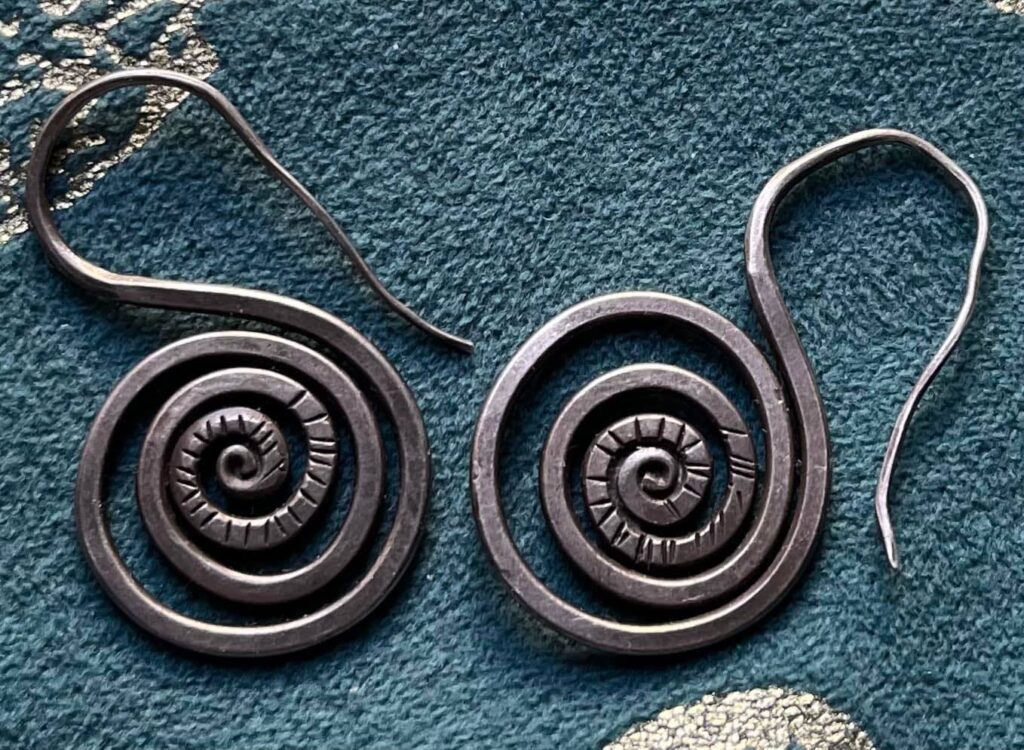
I believe we live our lives in spirals. I believe we return to and have the opportunity to revisit moments in our past, even as we go forward. Or perhaps as the only way to go forward. I believe this to be true for each of us as individuals and I believe it is true when it comes to collective groups and to societies. These returns and revisitations are ways to understand our lives anew, to refresh them or be refreshed by the continuity they may represent or the contrast they may offer.
Looking back while moving forward. Looking back as the only way to move forward with integrity. It reminds me of the Sankofa, the image of a bird which comes from the Akan people of Ghana and is used in so many progressive African American movements, particularly ones that explicitly focus on history. We encountered the Sankofa as part of the Hidden History tour yesterday.
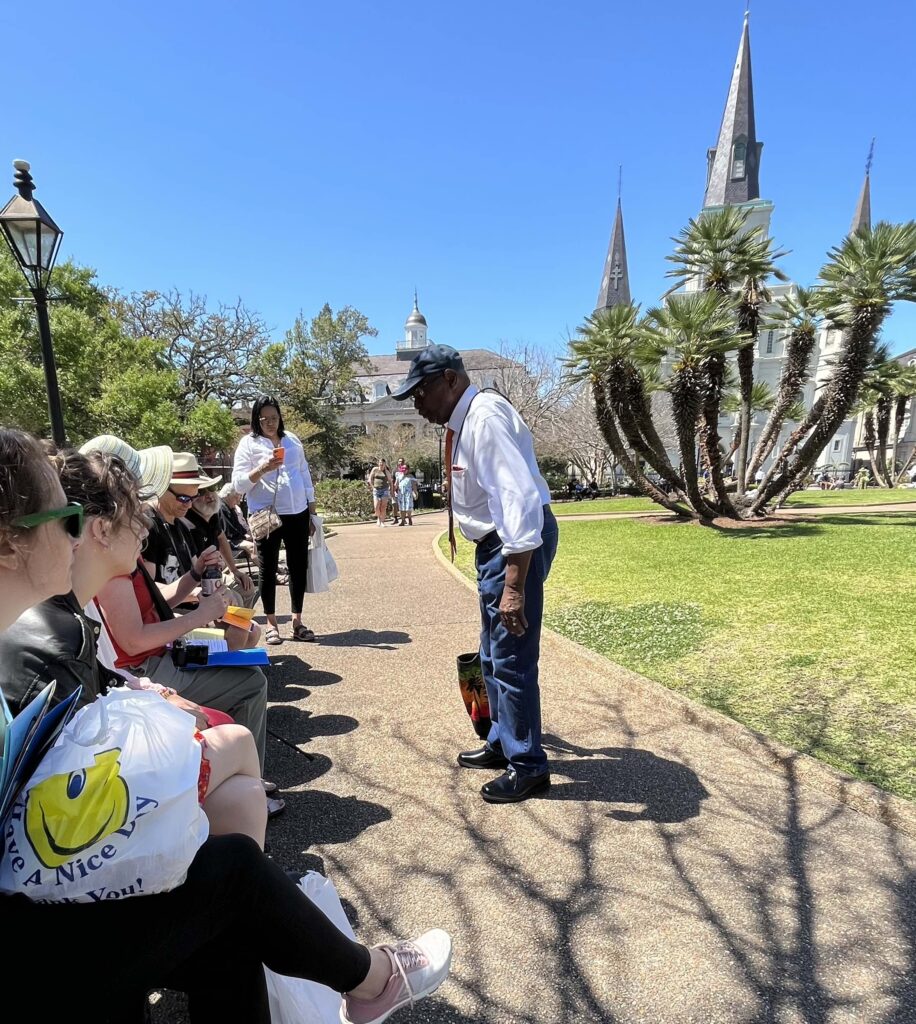
Twelve had signed up for this tour – a couple from Philly; an extended family from Colorado; myself. We met Mr. Waters on Decatur Street in the (so-called) French Quarter, bustling with many tourists and a plethora of street vendors on a beautiful day. There was some good music. And some that one, including our tour guide, might call noise.
Mr. Waters is a powerful truth-teller and community activist. He has written a book ~ THE book ~ on the slave revolt of 1811 (he is descended from one of the rebels). He has changed the face of New Orleans for the good and continues to do so.
The second stop on the tour was along the New Orleans “Moonwalk,” right up against the mighty Mississippi. It was there that we saw this marker: ‘Homage to the Transatlantic Slave Trade.’ It was installed in April, 2018 by the New Orleans Committee to Erect Markers on the Slave Trade.
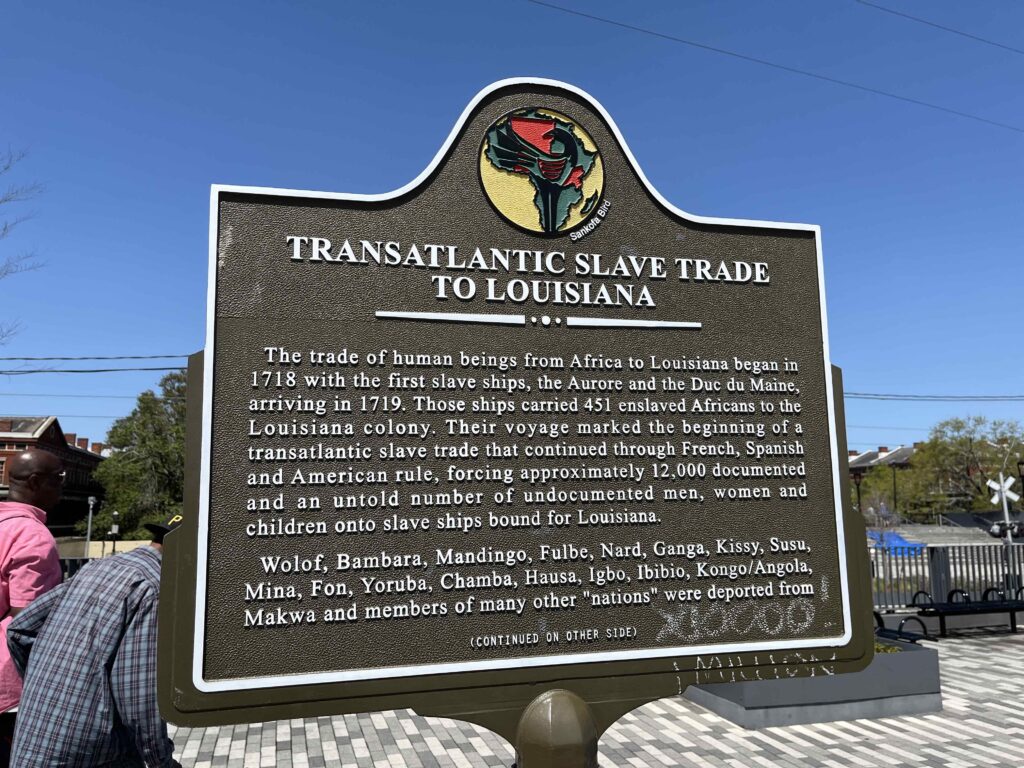
I feel thankful for those community activists who made it happen, including Mr. Waters, our tour guide. When the Transatlantic Slave Trade was outlawed in 1808, New Orleans became the largest market for trafficking humans with more than a million (some put the number at 1.5 million, including Mr. Waters) enslaved people passing through New Orleans.
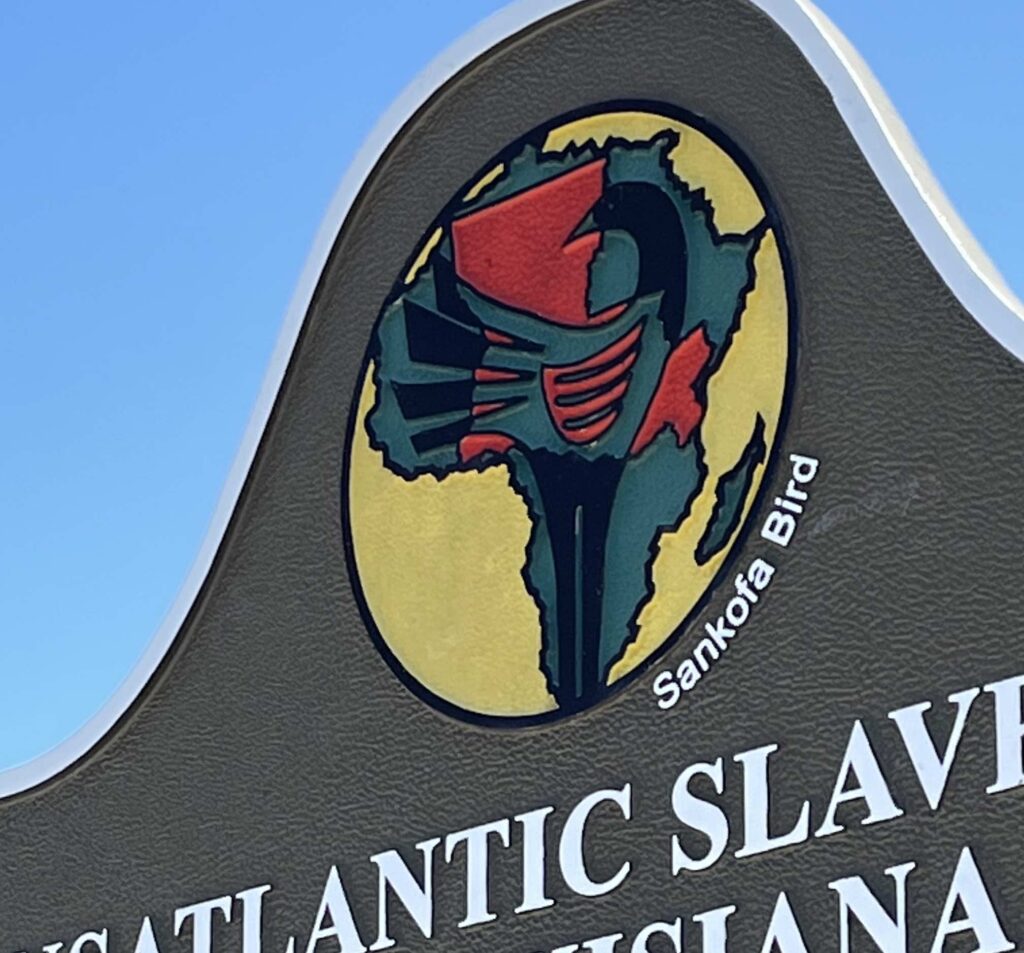
Notice at the top of it there is a symbol, chosen by the committee who worked long and hard to get this marker placed. Do you see it? Alongside the continent of Africa?
Yes, the Sankofa.
